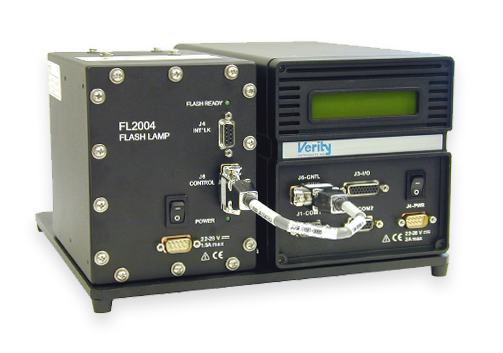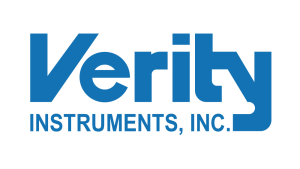
Spectral Reflectometer SP2006
Spectral Reflectometer SP2006TM Series
[wp-svg-icons icon="warning" wrap="i"] Consult Verity for availability as this item is at End of Life.
Verity's SP2006TM Spectral Reflectometer is designed for a wide variety of film thickness applications, including those required in etch, CVD and CMP processes. Verity Spectral Reflectometers are successfully controlling hundreds of semiconductor process tools worldwide.
The key components of the SP2006 are the SD1024FTM spectrometer, FL2006 Xenon flashlamp, and SpectraViewTM applications software. The heart of the SP2006 is the SD1024F Spectrometer, which uses a scientific grade CCD detector for excellent dynamic range, UV detection capability, and low noise. The SD1024F also has capability for multi-fiber input operation, and controls the flashlamp. The
FL2006TM flashlamp is a bright, broadband light source useful for the applications described herein. The FL2006's output has a strong UV content thus enabling the measurement of relatively thin film layers that would not otherwise be possible using a reflectometer. Since a flashlamp is used, the motion of moving wafers does not result in the blurring of data, which enables more accurate measurement.
The SpectraView PC host application provides robust film thickness determination through a variety of "open" algorithms. SpectraView enables integration with tool-to-application-PC communication based on RS232, Ethernet or DI/O.
We’ve gone the extra mile, so you don’t go the extra nanometer.
Features & Benefits
- Designed for in-situ or in-line measurement of film thickness in etch, CMP and CVD applications
- Real-time measurement
- SD1024F™ Spectrometer provides:
- Excellent UV sensitivity
- Wide dynamic range
- Excellent S/N ratio
- Multi-fiber input capability
- Pulsed light source provides:
- In-situ measurement by subtraction of plasma
- Freeze-frame images in case of moving wafer
- High brightness for excellent S/N ratio
- SpectraView™ software provides:
- Robust endpoint and film thickness algorithms
- Open algorithms and sequences for flexibility
- Tool integration via Ethernet, RS232, and DI/O
- Usable range:
- Standard: 225-800nm
- Optional: <225-800nm
- Fringe-count, reflectivity and model-based algorithms
